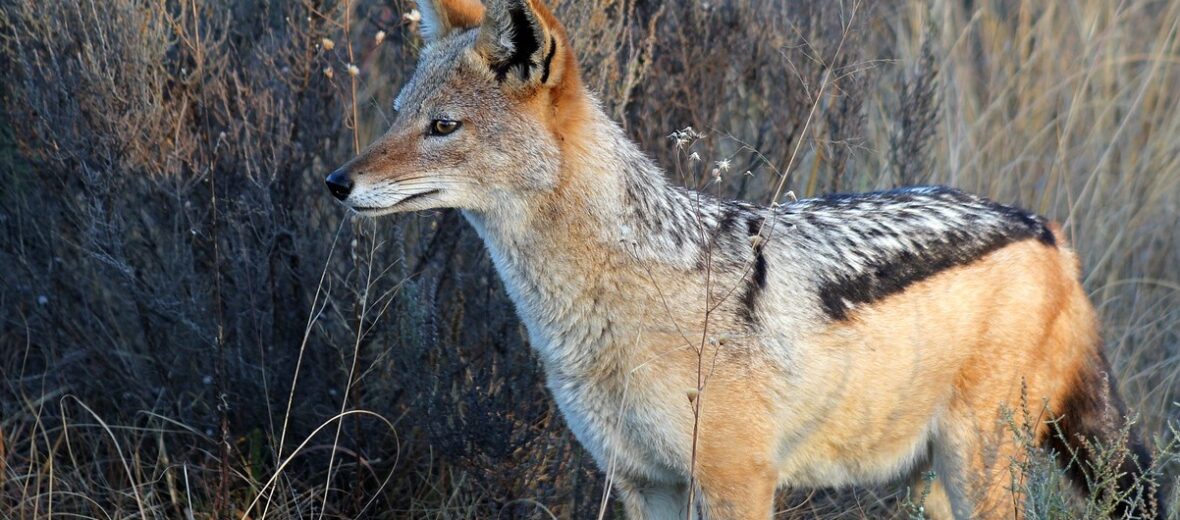
A member of the canine family, the cunning jackal can be found in various parts of Africa, the Middle East, India, and Southeastern parts of Europe. They are hearty survivors that can be found in deserts, Savannas, marshes, grasslands, bush-lands, mountains, and woodlands. There are 3 known species of jackal: golden, black-backed, and the side-striped. These critters are listed as Least Concern by the IUCN.
First the Stats…
Scientific name: Canis aureus
Weight: Up to 25 lbs.
Length: Up to 33 inches, plus a 10 inch tail
Height: Up to 18 inches, at the shoulder
Lifespan: Up to 16 years
Now on to the Facts!
1.) Opportunistic as they are, they eat smaller gazelles, snakes and other reptiles, seals, insects, sheep, fruit, berries, and even grass! Jackals will also feast on carrion (dead animals).
2.) A jackal can live in a solitary capacity or in a large pack. Large packs tend to have a better chance of preying on larger animals.
3.) Larger predators will prey on jackals. Animals like cheetahs, leopards, hyenas, and larger eagles.
4.) Being territorial, jackals fiercely defend their territory and frequently mark it with urine.
5.) Jackals are monogamous (mate for life).
But wait, there’s more on the jackal!
6.) They are vocal and produce a variety of sounds based on the need. Some of the sounds they make are: howls, yips, growls, and “owl-like hoots”. A siren-like howl is produced when food is discovered.
7.) The sounds are inherent to their pack and other pack’s sounds are ignored.
Did you know…?
Jackals can run up to 40 mph!
8.) These critters are also crepuscular (active at dawn and dusk).
9.) After a 2 month gestation (pregnancy), the female will birth 2 – 4 cubs.
10.) In the Bengali tantrik traditions jackals are thought to represent the Goddess Kali. She is said to turn into a jackal when meat is offered to her.



